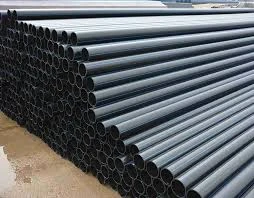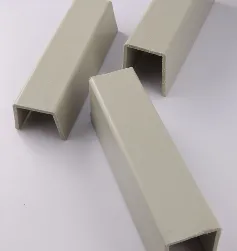Jun . 05, 2025 22:56 Back to list
Durable Translucent PP Sheet Lightweight & Chemical-Resistant
- Technical advantages and material specifications of polypropylene sheets
- Current market data and industrial adoption metrics
- Comprehensive manufacturer capability analysis
- Customization options across dimensions and formats
- Sector-specific application scenarios
- Processing methodologies and fabrication insights
- Future industry developments and closing insights

(translucent pp sheet)
Understanding Translucent PP Sheet Properties and Performance
Translucent polypropylene sheets demonstrate extraordinary physical characteristics that outperform traditional materials. With light transmission rates ranging between 20-50% depending on thickness, they provide optimal diffusion while maintaining privacy. These sheets achieve remarkable impact resistance at 60% higher than standard acrylics, with an Izod notched impact rating of 17 kJ/m². Chemical resistance covers pH values from 3 to 11, making them impervious to alkalis, acids, and most solvents.
Thermal stability extends across a service temperature spectrum from -20°C to 100°C, coupled with low moisture absorption rates below 0.01% over 24 hours. Electrical insulation resistance exceeds 10¹⁶ Ω·cm, making them indispensable for electronic housings. Available in thicknesses spanning 0.5mm to 15mm, they provide designers with exceptional flexibility. Recent polymer advancements have enhanced UV stability, extending outdoor usability to 10+ years without significant degradation.
Market Growth Statistics and Usage Metrics
The global translucent polymer market has grown by 17.2% annually since 2020, reaching a $12.7 billion valuation according to industry reports. PP sheets constitute 38% of this market segment, the largest share of any semi-crystalline polymer. Environmental pressures are accelerating adoption, with PP sheets reducing carbon footprint by 75% compared to polycarbonate alternatives.
Regionally, Asia-Pacific dominates consumption at 44% of global demand, followed by North America (28%) and Europe (23%). Industrial packaging applications consume 55% of annual production volumes, while medical equipment manufacturing utilizes another 18%. Automotive lighting applications show the fastest growth trajectory at 22% CAGR, driven by lightweighting initiatives across major manufacturers.
| Parameter | Entry-Level | Mid-Grade | Premium | Industrial-Grade |
|---|---|---|---|---|
| Tensile Strength (MPa) | 28-32 | 33-36 | 37-40 | 41+ |
| Light Transmission (%) | 20-25 | 26-35 | 36-45 | 46-50 |
| Maximum Thickness (mm) | 5 | 8 | 10 | 15 |
| Haze Factor (%) | 85-92 | 75-84 | 65-74 | 55-64 |
| Chemical Resistance | Good | Very Good | Excellent | Outstanding |
Leading Manufacturer Capabilities Comparison
Top global manufacturers differentiate through specialized formulations as much as production scale. Sabic offers co-polymer variants providing enhanced clarity at the expense of cold temperature performance. LyondellBasell's patented nucleation technology improves crystallization rates by 40%, enabling faster cycle times during thermoforming processes.
Asian producers like Prime Polymer focus on cost-competitive solutions using advanced compounding technologies, while European manufacturers like Borealis lead in sustainability with recycled content formulations achieving 92% material reusability. Production methodologies also vary significantly - extrusion-cast sheets offer superior optical properties, while compression-molded alternatives deliver improved thickness consistency in ultra-thin gauges.
Customization Capabilities Across Industries
Specialized formulations cater to exacting application requirements across sectors. UV-stabilized grades with a minimum 2% HALS concentration are essential for outdoor signage applications. Food-contact compliance requires FDA/EC1935 certification alongside specialized anti-fog coatings maintaining 85%+ visibility in refrigeration contexts.
Thickness options range from medical-grade thin films at 0.1mm to industrial structural panels at 15mm. Surface textures vary from matte finishes reducing glare to glossy surfaces optimizing light transmission. Medical implementations demand gamma radiation compatibility with ISO 10993 certification, while architectural specifications typically require Class B fire ratings.
Application Use Cases by Industry Sector
Medical Technology: MRI machine components leverage the material's non-magnetic properties, with radiation-shielding formulations blocking 97% of X-ray frequencies. Surgical trays provide chemical resistance to sterilization agents at 132°C.
Retail Design: Point-of-purchase displays utilize thermoformed PP sheets which maintain structural integrity at 60% less weight than glass alternatives. Illuminated signage achieves uniform light dispersion through controlled haze characteristics.
Industrial Equipment: Safety guards around machinery leverage impact strength 20 times greater than glass. Chemical processing tanks utilize PP's impermeability to corrosive substances while enabling visual monitoring.
Fabrication Techniques and Processing Insights
Fabrication begins with precise drying requirements - 3-4 hours at 85°C prevents micro-bubble formation during thermoforming. Thermoforming temperatures range between 155-165°C, with heating times adjusted according to thickness (approximately 1 minute per millimeter).
High-frequency welding yields strongest joints at 40-100MHz frequencies with pressure maintained during cooling cycles. Water jet cutting tolerances reach ±0.1mm for complex geometries, while CNC machining maintains feed rates of 1-2 m/min with spindle speeds below 12,000 RPM to prevent material softening.
Transparent PP Sheet Innovations and Market Outlook
Next-generation transparent PP sheet solutions are being developed to bridge performance gaps with engineering polymers. Multi-layer co-extrusion techniques enable combinations of PP layers with specialized barrier properties achieving oxygen transmission rates below 5 cc/m²/day. Recent nano-composite formulations incorporate sub-5% mineral reinforcement, improving stiffness without compromising the material's translucency advantage.
Automotive applications present substantial growth potential, particularly in EV battery enclosures requiring impact resistance and thermal runaway containment. Industry 4.0 integration is increasing through digitally printed conductive circuits on PP substrates, creating intelligent surfaces. Biopolymer formulations now maintain performance parity while offering full compostability within 9-12 months under industrial conditions.

(translucent pp sheet)
FAQS on translucent pp sheet
Q: What is a translucent PP sheet?
A: A translucent PP sheet is a polypropylene plastic material that diffuses light for semi-clear visibility. It offers privacy while transmitting illumination effectively. Commonly used in signage or packaging due to its durability.
Q: How does a transparent PP sheet differ from a translucent one?
A: Transparent PP sheets provide clear, undistorted visibility like glass, unlike translucent sheets that scatter light for a frosted effect. Both are polypropylene-based but serve distinct optical applications, such as displays versus light filters.
Q: What are the key properties of polypropylene PP sheets?
A: Polypropylene sheets are lightweight, chemical-resistant, and recyclable, making them ideal for industrial use. Translucent or transparent variants add light-diffusing or clear-view benefits. They excel in impact resistance and cost-effectiveness.
Q: Where are translucent PP sheets commonly applied?
A: Translucent PP sheets are popular in food packaging, lighting panels, and protective barriers due to their light-transmission and hygiene qualities. They offer a balance of privacy and brightness, often used in commercial or medical settings.
Q: Can transparent PP sheets replace glass in certain uses?
A: Yes, transparent PP sheets are shatterproof alternatives to glass for applications like windows or containers. They combine clarity with polypropylene's benefits like flexibility and low weight. This makes them safer and more versatile in dynamic environments.
-
HDPE Natural Sheet: Durable, Food-Grade & Versatile Plastic Solutions
NewsAug.27,2025
-
Durable Glossy PVC Rigid Sheet | Premium High-Shine Panels
NewsAug.26,2025
-
Durable PP Rigid Sheet: Lightweight, Chemical Resistant Solutions
NewsAug.21,2025
-
PVC Grey Sheet for Extraction: Chemical Resistant & Durable
NewsAug.19,2025
-
Durable PVC Pipe Fittings for Plumbing & Irrigation Needs
NewsAug.18,2025
-
HDPE Steel Belt Reinforced Spiral Corrugated Pipe | High Strength
NewsAug.17,2025

